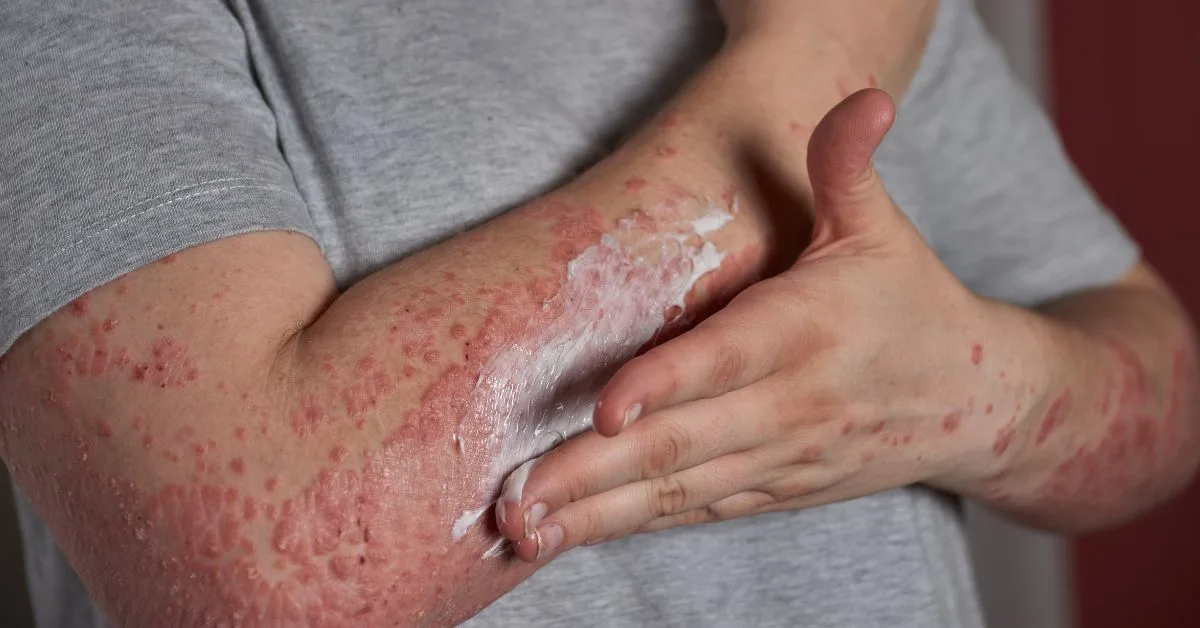Overview of 5 Early Signs of Leprosy
Leprosy is also known as Hansen’s disease. A chronic infectious condition called leprosy comes on by the bacteria Mycobacterium lepra. While it is relatively rare today, but it still exists in many parts of the world, particularly in tropical and subtropical regions. Early identification and treatment are very important in managing leprosy and preventing its complications. Recognizing the early signs of leprosy can help individuals seek medical attention promptly.
Here are five early signs to be aware of:
1. Skin Lesions or Patches

One of the most common early signs of leprosy is the appearance of skin lesions or patches. These patches can be darker than the surrounding skin and may not be painful at starting phase. After some time the lesions can become numb due to nerve damage that caused by the disease. These patches typically appear on cooler areas of the skin; such as the face, ears, hands, and feet.
Skin Lesion:
- A skin lesion refers to any abnormality or change in the skin’s structure or appearance.Lesions can be caused by a variety of factors, including injury, infection, inflammation, or underlying medical conditions.
- Skin lesions can manifest as bumps, sores, ulcers, cysts, moles, or any other abnormal growth or change in the skin’s texture or color.
- Skin lesions can be benign (non-cancerous) or malignant (cancerous).
Rash:
- A rash refers to a temporary outbreak of red, inflamed, or irritated skin that may be accompanied by itching, pain, or other discomfort.
- Rashes can have various causes, including allergies, infections, irritants, autoimmune disorders, or underlying medical conditions.
- Rashes can appear as small red bumps, patches of redness, blisters, or raised welts on the skin.
- Rashes may be localized to specific areas of the body or may spread across larger areas.
What Is Skin Early Stage Leprosy Symptoms
- Skin Lesions or Patches
- Loss of Sensation
- Enlarged Nerves
- Muscle Weakness or Paralysis
- Eye Problems
- Nasal Congestion or Nosebleeds
- Ulcerations and Secondary Infections
- Changes in Skin Color and Temperature
2. Numbness or Loss of Sensation
Leprosy affects the nerves, leading to loss of sensation in affected areas. This numbness can make individuals more susceptible to injuries and infections because they may not feel pain or discomfort. Numbness commonly occurs in the hands, feet, and facial areas. It’s important to pay attention to any loss of sensation, especially if it’s accompanied by skin lesions or patches.
What is loss of sensation called?
Numbness can be classified into various types based on its characteristics and underlying causes. Here are four common types of numbness:
- Paresthesia: Paresthesia refers to abnormal sensations such as tingling, prickling, burning, or crawling feelings. It is often described as a “pins and needles” sensation and can occur due to nerve compression, injury, or certain medical conditions like peripheral neuropathy.
- Hypoesthesia: Hypoesthesia is a reduction in sensitivity to touch or sensation. It can manifest as a diminished ability to feel pressure, temperature, or pain. Hypoesthesia may occur due to nerve damage, nerve compression, or medical conditions affecting nerve function.
- Anesthesia: Anesthesia refers to a complete loss of sensation in a specific area of the body. It can occur temporarily, such as during medical procedures where local or general anesthesia is administered, or it can be a symptom of underlying neurological conditions affecting sensory nerves.
- Dysesthesia: Dysesthesia is an unpleasant or abnormal sensation that may be described as burning, stabbing, or electric shock-like. Unlike paresthesia, which involves abnormal sensations without an apparent stimulus, dysesthesia often occurs in response to touch or pressure. It can be a symptom of nerve damage, neurological disorders, or conditions like multiple sclerosis.
3. Muscle Weakness or Paralysis
As leprosy progresses, it can cause muscle weakness or paralysis in the hands and feet. This weakness may make it difficult to grasp objects or perform tasks that require fine motor skills. In some cases, muscle paralysis can lead to deformities if left untreated. Any noticeable weakness or changes in muscle function should be evaluated by a healthcare professional.
What is slight paralysis or weakness of muscles?
4. Thickened or Enlarged Nerves
Leprosy can cause thickening or enlargement of nerves, particularly those close to the skin’s surface. These enlarged nerves may appear as lumps or nodules under the skin. They are often tender to the touch and can be accompanied by pain or discomfort. Palpating the skin for any unusual lumps or thickened areas can help in identifying possible signs of leprosy.
Which disease causes nerve thickening?
In some cases, leprosy can affect the eyes, leading to various complications such as dryness, redness, and sensitivity to light. If left untreated, leprosy can cause blindness due to damage to the cornea and other structures of the eye. Any changes in vision or eye discomfort should be promptly evaluated by an eye care professional, especially in regions where leprosy is endemic.
Early detection of leprosy is key to preventing its progression and reducing the risk of complications. If you notice any of these signs or symptoms, it’s important to seek medical advice promptly. Leprosy is treatable with multidrug therapy, especially when diagnosed in its early stages. With timely intervention and proper management, individuals with leprosy can lead fulfilling lives and avoid the disabling effects of the disease.
What are the most common eye problems?
Common eye problems can vary widely in according to severity and impact on vision. Some of the most typical vision issues are include:
- Refractive errors
- Cataracts
- Glaucoma
- Age-related macular degeneration (AMD)
- Diabetic retinopathy
- Dry eye syndrome
- Conjunctivitis (pink eye)
- Strabismus
- Floaters and flashes
- Retinal detachment
How can I solve my eye problems?
I am not a doctor but according to me as a health care provider i can offer some general informations and advises that can help in to solving common eye problems. However, it is also necessary to speak with a qualified eye care professional for personalized advice based on your specific condition. Here are some common ideas:
- Visit an Eye Care Professional
- Follow Prescriptions
- Practice Good Eye Hygiene
- Protect Your Eyes
- Blink Regularly
- Take Breaks from Screens
- Maintain a Healthy Lifestyle
- Manage Underlying Health Conditions
- Use Artificial Tears
- Get Adequate Sleep
FAQ: 5 Early Signs Of Leprosy
What is the first stage of leprosy?
The first stage of leprosy is characterized by the appearance of skin lesions that may be discolored patches, nodules, or plaques. These lesions are usually lighter than the surrounding skin and may or may not be categorized by sensory loss in the affected areas. Other symptoms at this stage may include numbness, tingling, and muscle weakness.

Hi there
My name is Diana Rossenga and I represent Musgrave Group, Ireland’s largest wholesaler. We’re always on the lookout for fresh opportunities that can help expand our offerings while promoting quality products from other companies around the globe.
We find your product line quite impressive and believe it aligns perfectly with our business model.
I’ve been trying to locate your export department with no luck yet. Can you pass this message to your CEO or Export dep.
Mrs Diana Rossenga
Musgrave Group
Cork,
Ireland
Email: bookings@musgraveimports.com
hii my name is sandeep samrat, how can i help you in expanding or promoting your products.